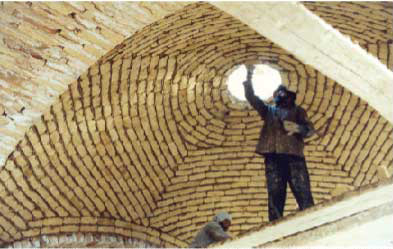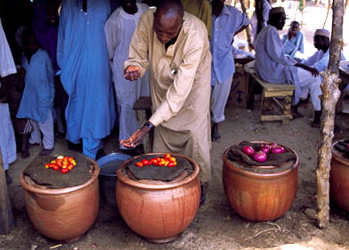The Second Annual Conference of the Adobe Association of the Southwest will take place May 21, 22 and 23 in El Rito, New Mexico on the campus of Northern New Mexico Community College in the recently renovated Cutting Hall Auditorium. It is a stately adobe building joining the two-story adobe South Dorm and Cafeteria.
Schedule:
Adel Fahmy, Cairo: “Old Traditions and New Improvements”
John Morony, Southwest Texas Junior College: “Adobe and Latent Heat; A Critical Connection”
Ronald Rael, Clemson University: “A Counter History of Modern Architecture” Luis Fernando Guerrero Baca, Univ. Autonima Metropolitana, Xochimilco with Francisco Uvina Contreras, Cornerstones Community Partnerships: “Conserving Adobe Architecture at the Camino Real de Tierra Adentro”
Dean Sherwin, Philadelphia: “Heavy and Slow, the Thermal Properties of Thick Wall Construction”
Reid Hayashi and Kristina Orchard-Hays, El Prado, NM: “Monolithic Adobe: A Viable and Inexpensive Building Method for the Southwest”
Arnie Valdez, San Luis, CO: “Adobe Education at UNM: Alternative Construction Methods and Materials”
Richard Burt and Charles Graham, Texas A&M: “The Earth Construction Course at Texas A&M University”
Barbara Narici, Milan, Italy: “Raw Earth Architecture in Italy between Tradition and Actuality; Geologika and Mud Interiors as an Ancient Energy in Today’s Immaterial Life”
Quentin Wilson, NNMCC: “Jacal y Fuerte, Wattle and Daub in NM”
Anita Otilia Rodriguez, Mexico and Taos: “La Enjarradora”
Mark Chalom, Santa Fe: “The Prisciantelli Home: Adobe Off the Grid”
Simone Swan, Santa Fe/Presidio: “Teaching Women in Obregon; Passing on the Legacy”
Pat Frazier, Abiquiu, NM: “Houses built by Pat and Felipe”
Steve Safken, Arizona: “Adobe: Compressive Structures and Materials” (Not Confirmed)
Susan Jerome, Mule Creek, NM: “Community Building at the Mudpit”
Dr. Mahmoud Ahmed Eissa, King Abdel Aziz University, Jeddah: “Ecological Aspects of the Courtyard House as a Passive Cooling System” (Not Confirmed)
Steve Burroughs, PhD, Canberra, “Affordable Earth Construction” (Pending)
Conference Schedule:
Friday, May 21, 2004
11AM to 1PM Registration
1:30PM to 4:30 PM Session I
5PM to 6:30PM Dinner
7PM to 9PM Social Hour
Saturday, May 22, 2004
9:30AM to 12M Session II
1:30PM to 5PM Tour
7PM to 9PM Session III
Sunday, May 23, 2004
9:30AM to 12M Session IV
Northern New Mexico Community College has dorm rooms, suites, and a cafeteria available at very reasonable prices. Contact Donald Martinez for reservations or local hotel/motel contacts at 505-581-4120 or donmart@mail.nnmcc.edu
The Conference registration cost is $30 for Association members and $45 for non-members. Charles Knight is the Conference Registrar at 505-581-0159 or mailto:cdkni@zianet.com
Contact Quentin Wilson, Conference Coordinator for other questions at 505-581-4156 or qwilson@mail.nnmcc.edu



